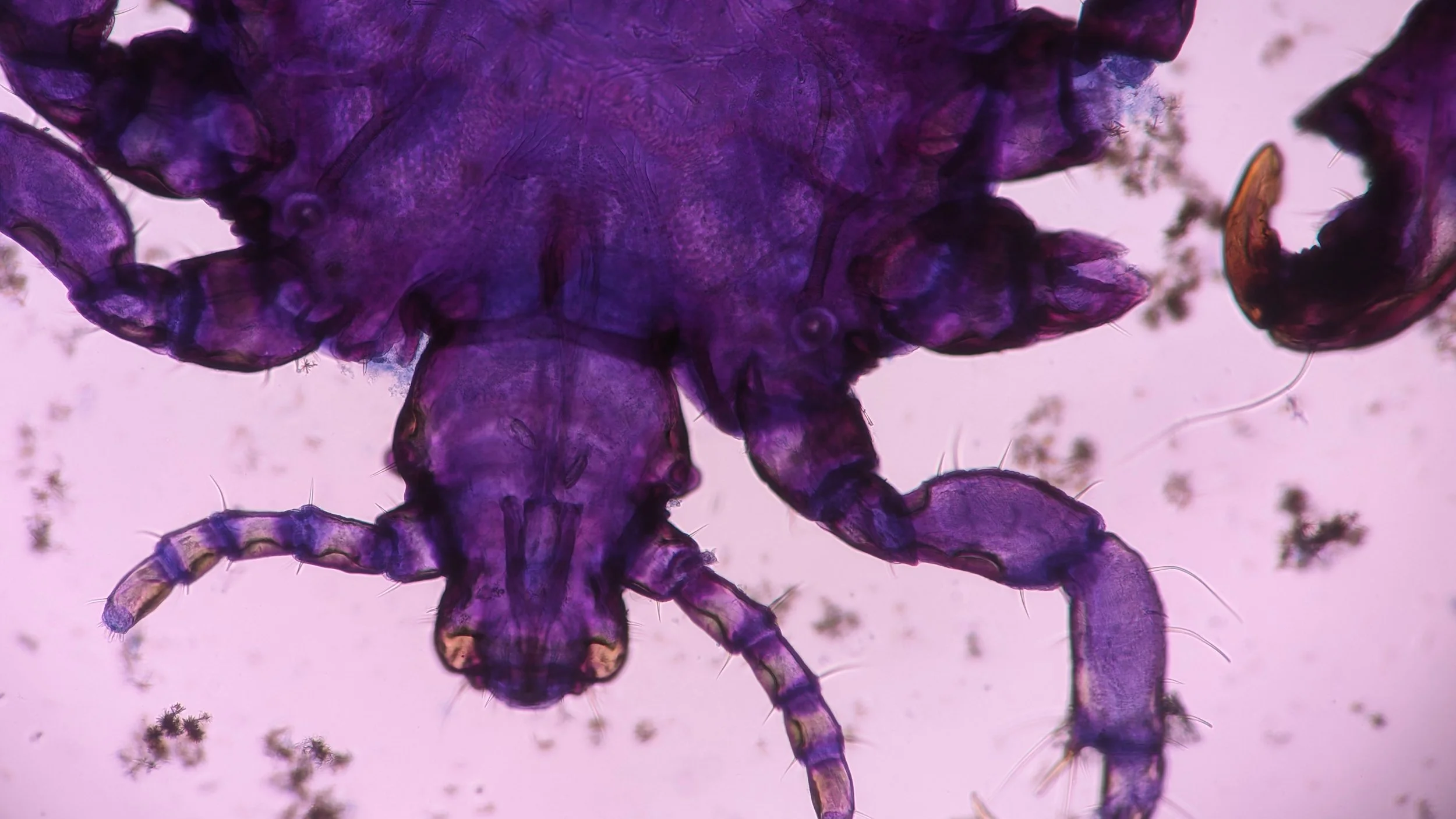Demodex Mites: The Hidden Cause of Perioral Dermatitis?
If you’ve been told that mites are to blame for your perioral dermatitis, don’t panic. The truth is more nuanced. Demodex mites have long been accused of causing those frustrating, itchy red bumps that appear around the mouth, nose, and eyes. The theory sounds convincing: tiny microscopic creatures burrowing into our hair follicles and triggering inflammation. But research paints a different picture. Rather than being the culprits, Demodex mites are actually a natural, and beneficial, part of the skin’s microbiome. Before we dive into why they’re not the villains they’re made out to be, let’s first take a closer look at what Demodex mites are and the role they play on the human body.
What are Demodex mites?
Demodex mites are tiny ectoparasites; organisms that live on the surface of the body and they’re a normal part of human skin. Most commonly found on the face, these mites help make up the skin’s complex ecosystem. According to Rather and Hassan (2014), Demodex are microscopic mites that live in or near the hair follicles of mammals, where they feed on dead skin cells and the natural oils that collect there. In fact, a healthy population of Demodex mites is considered a normal component of the skin’s microbiome. Think of them as invisible helpers working quietly beneath the surface.
A similar relationship exists in nature. Sea lice, for example, spend their lives attached to humpback whales, feeding on algae, dead skin, and other debris, essentially keeping the whales clean. Yet, much like Demodex mites, they’ve earned an unfairly bad reputation. The term parasite often carries a negative connotation, implying harm, but the truth is that not all parasites are dangerous. Some play an essential role in maintaining balance.
If they are a normal part of our skin’s microbiome, why are they believed to cause perioral dermatitis?
When researchers examine inflamed skin under a microscope, they often find a higher-than-normal number of Demodex mites. As Rather and Hassan note, individuals with perioral dermatitis tend to show increased mite populations. This has led some to assume that Demodex must be the cause, but correlation doesn’t always equal causation. The same article points out that Demodex infestations are also common in healthy adults, suggesting there’s more to the story.
In reality, mite populations often grow when the skin’s natural defences are already weakened. Factors such as inflammation, excess oil production, or shifts in skin pH can create the perfect environment for them to multiply. Demodex mites are opportunistic; they thrive on skin that’s already irritated or unbalanced. So, when they appear in greater numbers during a flare-up, they’re more likely a symptom of disruption, not the source of it.
The same principle can be seen in nature. Using the same example as before, an infestation of sea lice is often an indication that the whale is unhealthy. This doesn’t mean that they are causing the whale’s condition. Rather, their presence signals an underlying problem. Similarly, an overgrowth of Demodex mites usually points to an imbalance in the skin’s ecosystem, not the root of the condition. Understanding this difference helps shift our focus away from trying to eliminate the mites to restoring the skin’s overall health and balance.
Metronidazole cleared my perioral dermatitis. How do you explain this?
Metronidazole is an antibiotic and antiparasitic medication that can be used topically or taken orally. It works by targeting and killing certain microorganisms, including bacteria and parasites. In some cases, perioral dermatitis is linked to an imbalance of gut bacteria, known as dysbiosis, which can trigger inflammation throughout the body. When the gut is out of balance, the intestinal lining can become more permeable, allowing toxins and other irritants to enter the bloodstream and contribute to skin flare-ups.
In these situations, metronidazole can help by reducing the overgrowth of harmful bacteria in the gut, which may in turn calm inflammation and improve the skin’s appearance. However, it also wipes out some of the beneficial bacteria, and rebuilding a healthy gut microbiome takes time. While this treatment can offer short-term relief and clearer skin, the results may not last if the underlying gut imbalance isn’t addressed, which explains why perioral dermatitis often returns after it seems to have cleared up from using metronizdazole.
Bottom line – there’s no proof.
In summary, there’s no solid evidence that Demodex mites cause perioral dermatitis. While studies have noted higher mite counts in people with the condition, this doesn’t prove a direct link. It’s more likely that their population grows simply because the environment becomes more favourable for them to flourish, much like sea lice feeding on algae and debris from a humpback whale. Demodex mites are essentially our skin’s cleanup crew, the unsung heroes of parasites that we didn’t even know we had… or needed.

